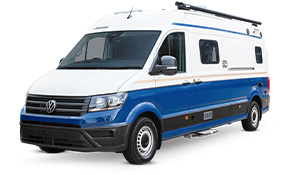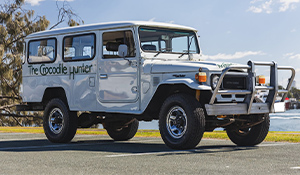Audi Q8 unveiled
Audi has released the production version of their ‘Q8’ SUV, with the new arrival to Audi’s growing SUV range making its European debut in June. Audi’s challenger to “Coupe SUVs” from Mercedes-Benz (GLE/GLC Coupe) and BMW (X5/X6 Coupe), the Q8 takes the basic Q7 platform (VW’s MLB Evo that’s used by a number of other models) and gives it a sporty makeover, with a coupe-like roofline, revised back-end treatment and a bolder, more aggressive front end, including a chunky surround to the signature Singleframe grille.
Seen against the Q7, the Q8 is defined by its sleeker profile and sloping rear roofline that dictates the new arrival only being offered as a five-seater, while the Q7 can be had with seven seats. Despite appearances to the contrary, the Q8 isn’t significantly smaller than the Q7: it rolls on the same 2994mm wheelbase, but reduced front and rear overhangs mean the 4986mm overall length is 66mm shorter than the Q7. The Q8’s 1995mm width is 27mm broader than the Q7, but, unsurprisingly, height is lower at 1705mm, compared to the Q7’s 1741mm.
Keeping the Q7 wheelbase means passenger space isn’t compromised, with early European testing reporting decent headroom in the Q8’s rear seats, but the sloping roofline and overall packaging does reduce luggage space to 650 litres with the rear seats up and 1755 litres with them folded, compared to 770/1955 litres in the Q7.

In terms of appearance, the Q8 is surprisingly faithful to the concepts that preceded it; namely the ‘Q8 concept’ from the 2017 NAIAS in Detroit and the ‘Q8 sport concept’ that followed at the 2017 Geneva Motor Show.
Audi’s signature Spindleframe grille remains for the Q8, but is bolder and more upright than the Q7, whereas that model’s prominent horizontal grille bars have been replaced by six vertical bars in a treatment that’s only slightly toned down from the Q8 concept. There’s more matte-finish grey trim around the grille on the production model, which is continued in the trim for the large lower front air intakes.
The bottom of the front bumper features a subtle skid plate and body coloured outer edges; which again are only mildly modified from the 2017 concepts. Audi describe this front end as the “new face of the Q family” so expect to see this treatment extend to other Audi SUVs in the near future.

On the flanks, the general form and sculpting is also as per the concept versions, with subtle bulges over the front and rear wheelarches. As with the front end, there are more body-coloured parts in the production Q8’s lower sills than the concept, with a scalloped sculpted section between the doors and wheelarch openings that can take factory wheel options up to 22 inches. At the rear, the concept’s spoiler continues the downward arc of the roofline and further accentuates the Q8’s sleek profile, but admittedly, the spoiler itself isn’t all that different from what’s on the Q7. Compared to the concept, the production Q8 adds subtle roof rails.
Vent-style cut-outs below the tail lights on the concepts have been replaced with a more conventional rear quarter and upper bumper look. The tail lights are more conventional, too, but there is an LED strip that runs the full width of the rear, with configurable ‘3D’ lighting available here, as it is with the front DRLs. Finally, the production Q8’s lower rear bumper and diffuser are, compared to the concept, fussier and more detailed - arguably unnecessarily so.

Being an Audi SUV, the Q8 has the quattro AWD system, as you’d expect, with the standard drive split from the mechanical centre differential being 40 per cent to the front axle and 60 per cent to the rear, but the smart system can transfer drive to the axle with the most traction when required
Despite being clearly tarmac-biased, Audi says the Q8 can handle off-road use, with hill descent control as standard and up to 254mm of ground clearance with the optional adjustable air suspension. When fitted, the air suspension can be raised or lowered to suit the terrain and driving style, with selectable ‘comfort and ‘sport’ set-up options providing variances of up to 90mm in ride height.
Also optional is an all-wheel steering function, already fitted to premium SUVs like the Lamborghini Urus and upcoming Rolls-Royce Cullinan. As with its application to these models, the rear wheel steering in the Q8 enables greater stability when cornering at speed, while also sharpening turn angles at lower speeds. Audi are also claiming the shorter front and rear overhangs (compared to the Q7) also improve its off-road ability.

From launch, the Q8 will be offered with a choice of petrol or diesel engines, and while full specs had not been revealed at press time, both are expected to be 3.0-litre turbocharged V6s, with the turbo-diesel ’50 TDI’ version producing around 210kW and the ’55 TFSI’ turbo petrol 250kW.
An 8-speed auto transmission from the existing Q range is most likely to be the standard transmission, although some European reports are indicating a 7-speed dual clutch auto will be available on the turbo-diesel. Both petrol and diesel drivetrains will add a 48V mild hybrid system, like that from the SQ7, that uses a lithium ion battery and belt alternator starter to recover energy from braking and enable engine-free coasting between 55 and 160km/h and start-stop performance at speeds above 22km/h; the result being improved driving range and fuel economy.
Following Q7 practice, a less-powerful 170kW version of the turbo-diesel is expected to be offered, too, but this may come sometime after the 210kW version. An ‘SQ8’ performance version is also likely, given the Q8 is up against aforementioned rivals that offer AMG (Mercedes) and M (BMW) performance variants.

The Q8’s interior takes its cues from the A8 luxury saloon, with the most notable influences being the two large centre touchscreens. The upper 10.1-inch display handles infotainment and navigation, while the lower 8.6-inch screen controls heating, air con and in-car comfort settings, while also enabling text input with the driver (or passenger) able to rest their wrist on the gear lever when entering data.
Instrumentation is all digital, too, with the ‘Audi virtual cockpit’ featuring a 12.3-inch display, in this instance, with two different displays available. A third, sportier version with head-up display is optional. The dash and console display is notable for the minimal use of buttons and switches, but the touchscreens feature tactile and audible responses to data input, while voice commands also limit the potential for driver distractions caused by looking at screens rather than the road.
Being the premium model, there is an abundance of interior trim choices for the Q8, including different seat designs and multiple leather options for the multi-function seats, as well as different materials for the cabin detailing and various sound systems.

Like the engine specs, trim levels and standard/optional features, the Q8’s passive and active safety equipment has not been revealed yet, even for the European release, but expect it to comfortably meet the maximum Euro NCAP rating, which means it should achieve a 5-star ANCAP safety rating, too.
Full details for the Australian-spec Q8, including model range, engine choices and option packs, will be revealed closer to local release, which is expected to be sometime early in 2019. Starting price for Australian-delivered Q8s is expected to be somewhere in the $120,000 - $130,000 range, with the lower kW turbo-diesel to be the closest to the Q7’s current $106,900 list price. An SQ8 version, should it come to fruition, would likely be around $170,000 locally. Watch this space for more information on the Audi Q8 as the Australian release draws nearer.










